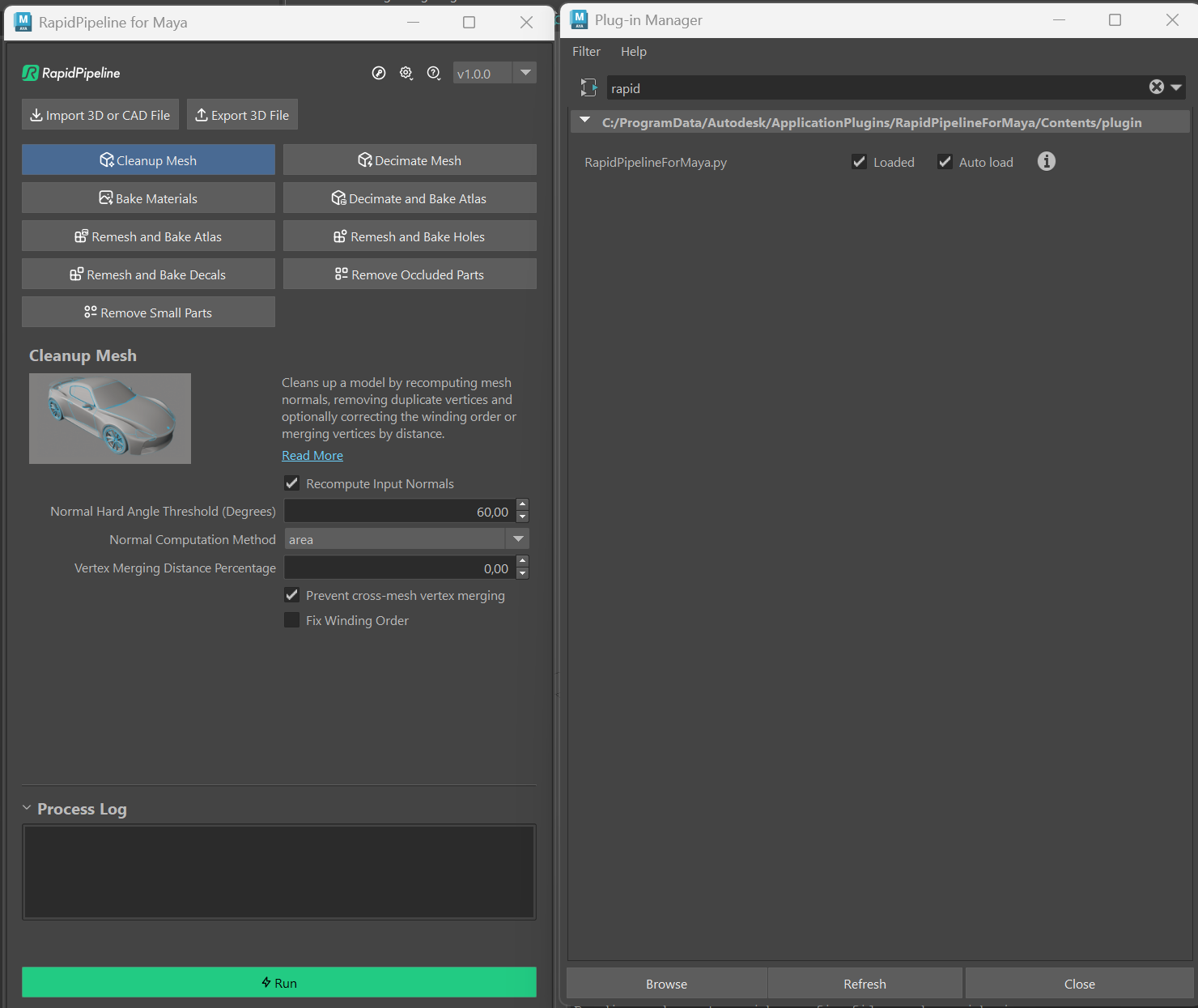RapidPipeline for Maya
Overview
Get started through RapidPipeline Maya Integration Tutorials.
Installation
1. Get a RapidPipeline Account with Integrations
Start your 14-day free trial or subscribe to a Pro or Studio plan.
If a RapidPipeline subscription is already attached to the account, and if the plan includes API access, then the integration is available for use.
Each seat of the Integrations allows unlimited usage on one machine. If you need to move machines, release the seat and generate a new one by using the token if saved or alternatively revoke the token and create a new one instead to generate a new valid seat. One seat can be released per 24 hours, and a seat will be auto-released 2 weeks after the latest usage.
Create a token if you don't have it yet (the same one can be used for all integrations).
For a more in-depth overview of the Token Generation Dashboard please refer to the Authentication Token Generation Tutorial.
For a more in-depth overview of the Integration (Plugin) Seats Management within the Integrations Dashboard please refer to the Integrations Dashboard Tutorial.
2. Download the package
Sign in the RapidPipeline Web Platform.
Click on Integrations at top bar.
Select Maya tab in the middle of the screen.
Under Downloads click the desired operating system link and download the package.
In case you are an end-user of the plugins and do not have an own account or you are an account manager and want to distribute the plugin packages to users, please refer to our public download repository for the integration packages.
Note that a valid token from a RapidPipeline Account is still required to activate the given integration and generate a seat.
Download and unpack
We provide packages written for the Autodesk plugin package format. Your download should consist of a compressed ZIP file. Its contents (a folder called RapidPipelineForMaya) should be copied to your Autodesk ApplicationPlugins folder. On Windows, this can typically be found by opening a File Explorer and typing in:
%PROGRAMDATA%\Autodesk\ApplicationPlugins

and hitting enter.
After copying the contents of the ZIP file you should then see this folder structure:
%PROGRAMDATA%\Autodesk\ApplicationPlugins\RapidPipelineForMaya
Run in Maya
You can now (re-)start Maya and it should automatically load the plugin. You can then find it registered in the Maya Plugin Manager as "RapidPipelineForMaya.py".

You can also choose to install this any other way Maya supports of course. The main file to look for to import the plugin:
RapidPipelineForMaya.py
Upgrading the Plugin
- Close Maya and delete any previously installed RapidPipelineForMaya folder first.
- Then proceed to follow the same steps as for the initial installation.
Known limitations
- The current relase of RapidPipeline for Maya is focused on static assets. Animations are not supported.
- Materials: Maya supports many material systems, but not all of them are necessarily supported by the RapidPipeline for Maya plugin.
- Our initial focus is on supporting Autodesk Standard Material where we support these PBR properties: basecolor, opacity, diffuse roughness and specular roughness, metalness, normal camera
- The plugin will always create optimized or imported shapes with Autodesk Standard Material.
- More complex shader graphs, even when feeding into an Autodesk Standard Surface shader node, may not be supported. For Maya we currently do not offer an automated solution, but you may still contact us about your needs to offer such support in the future via RapidPipeline DCC Importer.
- Files created during the optimization process will be stored in the same folder your scene is stored in (under rpd_temp_files). They are kept around since their contents are referenced by your Maya scene. Should you choose to delete some of these results in your Maya scene, the files with optimization/import data (typically FBX files) will remain where they were. You are free to delete any such data that is not referenced anymore.
- Furthermore, if you work in a scene that has not been saved yet these results will be stored and remain in your RapidPipeline for Maya plugin folder (as per your installation, see above.) If you then save the scene, these files will still remain and be referenced there, although any new new files created will now be stored in the scene folder.
Contact Us
Let us know how it's going, we would like to get your quick feedback here!